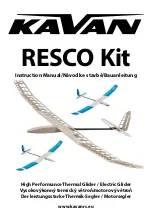
Arrival Procedures • 37
Circling Approach
When conducting a circling approach (precision or non-precision), execute the
approach with the same speeds at flaps 10° to the published circling minimums.
Maintain circling minimums at 80 KIAS, until in a position from which a normal
landing may be made.
When descending from MDA (circling minimums), select flaps 25° and slow to 70
KIAS. Slow to 66 KIAS when landing is assured.
Circling Approach Profile
Maintain 80 KIAS
Leaving MDA
90 KIAS
80 KIAS
400-500 FP
M
100’ Above MDA
MDA
FAF
“100 to go”
“Minimums”
Select Flaps 25°
Stabilized Descent at 70 KIAS
Landing Assured
Slow to 66 KIAS
Start Time if Required
“Before Landing Checklist”
Reduce Power
Select Flaps 10°
Holding
1. Slow to 100 KIAS holding speed 3 minutes prior to fix
2. Make proper entry
3. Report altitude and time at holding fix
4. Hold at 100 KIAS, with 1 minute leg to the inbound fix
(unless otherwise specified)
Summary of Contents for Piper Archer
Page 1: ...Piper Archer Training Supplement ATPFlightSchool com Revised 2019 08 08 ...
Page 4: ......
Page 58: ......
Page 59: ......








































